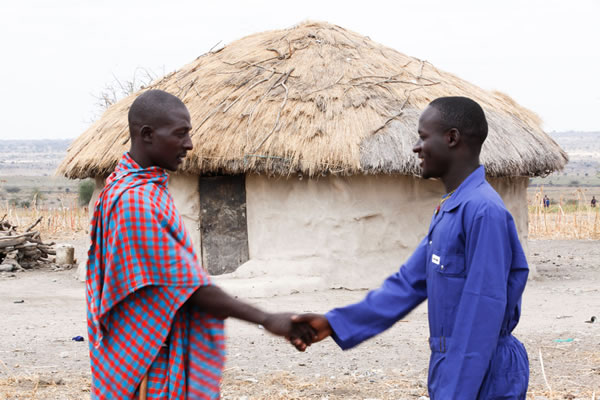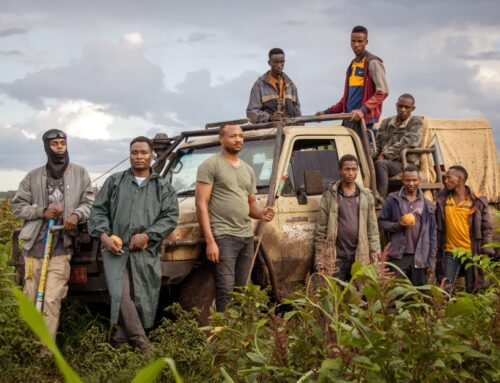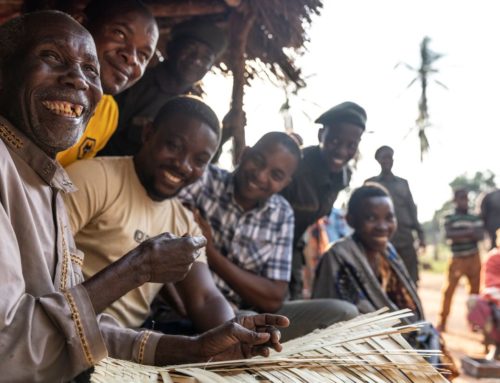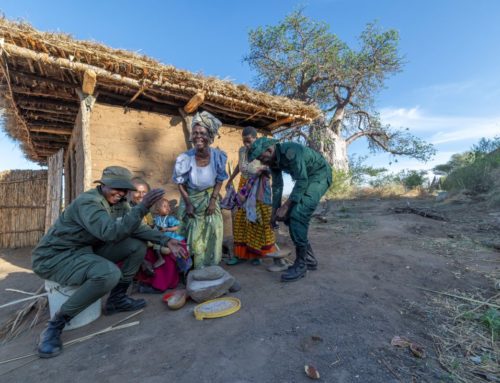Honeyguide is working with local communities to provide simple solutions to human-wildlife conflict. Through the innovative use of basic tools and materials, Honeyguide’s Human Elephant Conflict Toolkit is enabling communities to live peacefully alongside elephants, supporting both conservation and livelihoods.
Between 2009- 2014, Tanzania lost 60% of its elephant population to poaching. While most instances of poaching is not carried out by local communities, it is closely tied to human-wildlife conflict. In just one night, a farmer can lose several acres of crops if elephants invade a farm, resulting in significant hardship for whole families and villages. Farmers who try to protect their crops from raiding elephants are often injured in the process, causing resentment towards these large mammals. In 2016, 3 people were attacked in West Kilimanjaro by elephants, tragically resulting in fatal injury. Local communities will not support anti-poaching rangers if the very same elephants that the poachers are killing, are destroying their livelihoods. Honeyguide believe that positive engagement with local communities is essential to conservation efforts, and that in order to do this, the negative costs of wildlife on these communities must be minimized.
As human populations grow, natural areas are reduced, and human-wildlife conflict increases, communities have trialed various methods to prevent elephants from entering their farms; sadly the only effective method until recently was to kill the elephants. Honeyguide has responded to this challenge in the Tarangire and Kilimanjaro areas and developed the Human Elephant Conflict toolkit (HEC); an assortment of tools to help farmers deter elephants from raiding farms, without risk of harm to farmer or elephants.
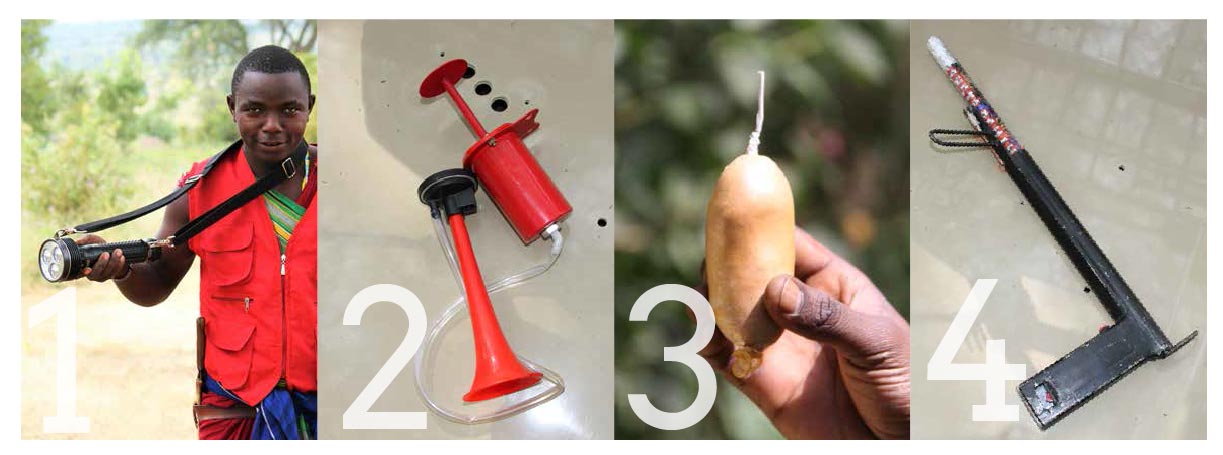
So, how does it work? The HEC toolkit is simple, targeting the elephant’s sense of sight, sound and taste, with tools ranging from low irritant to high impact for the more pervasive bulls. In each kit, is a flashlight, a horn, a chilli cracker (proudly invented by Honeyguide), and for the more inquisitive elephant bulls, a roman candle launcher. The flashlight targets eyesight, simply bothering the elephants until they move away; this is low irritation, cheap to use and has been one of the most useful components of the toolkit. The horn targets hearing, another low irritant, low cost tool. The chilli cracker is highly effective, using only gravel, chilli, a detonator and a condom! See the image below for the Honeyguide chilli cracker guide. If all that fails, the roman candle launcher is set off with 100% effectiveness.
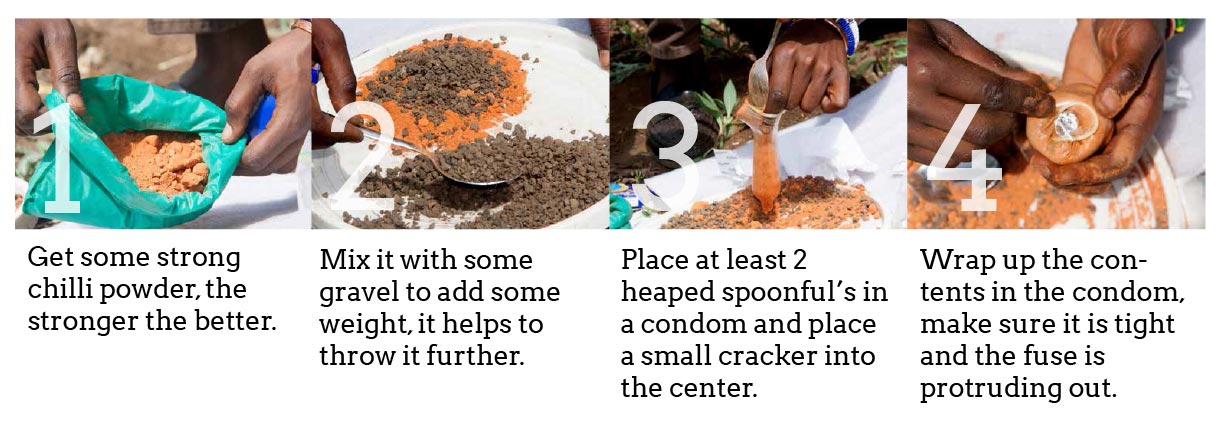
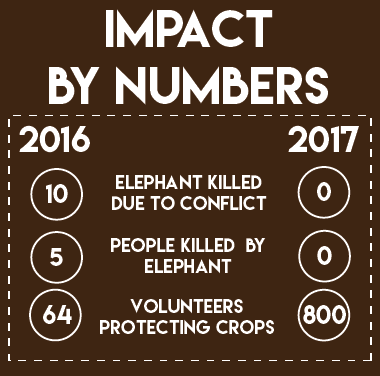 These toolkits have proven to be a huge success. Farmers are reporting harvesting nearly their whole crop, compared to a 70% loss previously. In Honeyguide protected areas, 330 tonnes of maize were protected from elephant raids. Not only are the toolkits protecting elephants, they are improving livelihoods and changing attitudes.
These toolkits have proven to be a huge success. Farmers are reporting harvesting nearly their whole crop, compared to a 70% loss previously. In Honeyguide protected areas, 330 tonnes of maize were protected from elephant raids. Not only are the toolkits protecting elephants, they are improving livelihoods and changing attitudes.
“Since we started using these kits, no communities have been killed and no elephants, we see the value of these kits…after the crop harvest wildlife can pass over our farms freely” member of Kakoi Songambele village.
Watch our video on the impact of the flashlight.
Word of the program has spread far and wide, well beyond Honeyguide’s focus areas. With the request from many communities from further afield asking for support, Honeyguide has responded by developing the Human Elephant Conflict handbook that will be distributed to farmers in elephant prone areas. The 28-page Honeyguide developed handbook is written in Swahili, and aims to educate farmers on the successes and proper usage of the toolkits, and the value of peacefully coexisting with the wildlife.
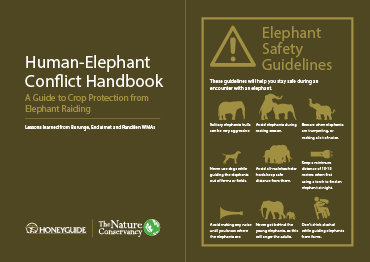 If you would like to share this booklet with your local community, download the Swahili booklet here>DOWNLOAD HWC HANDBOOK
If you would like to share this booklet with your local community, download the Swahili booklet here>DOWNLOAD HWC HANDBOOK
Honeyguide continues to research HEC measures and other innovative ways to prevent human elephant conflicts. It is hoped that with support from our donors, as well as contributions from local communities, this will develop into a long-term sustainable project that becomes an integral component of farming near wildlife areas here in Tanzania.

